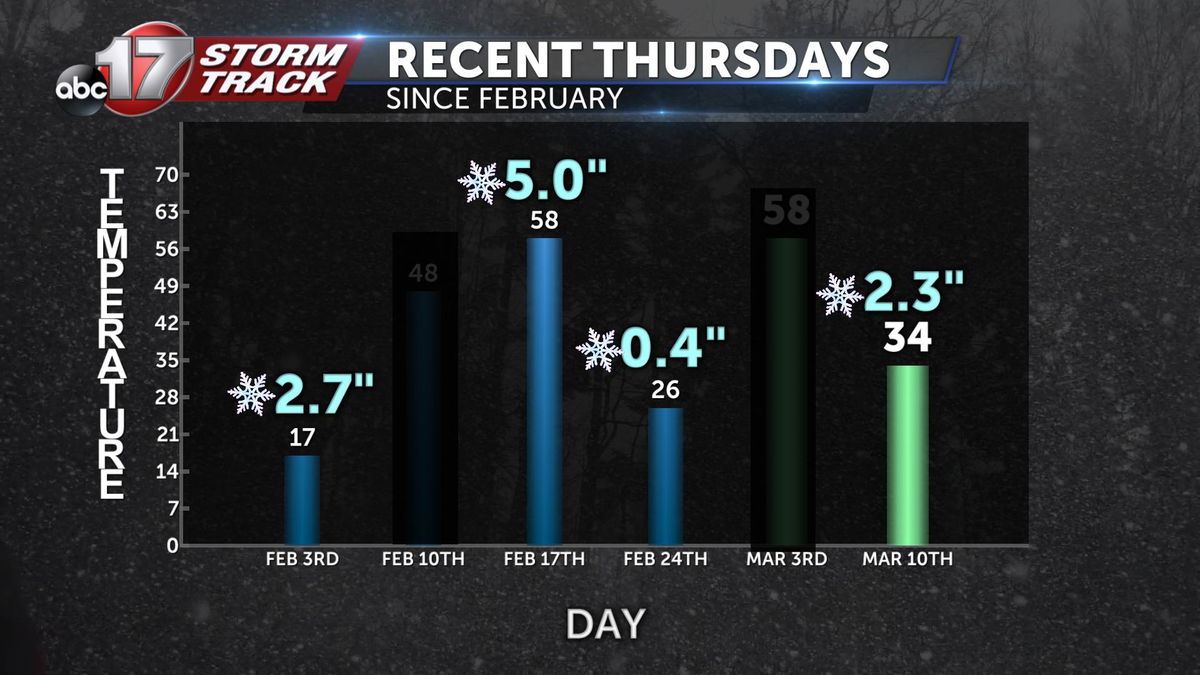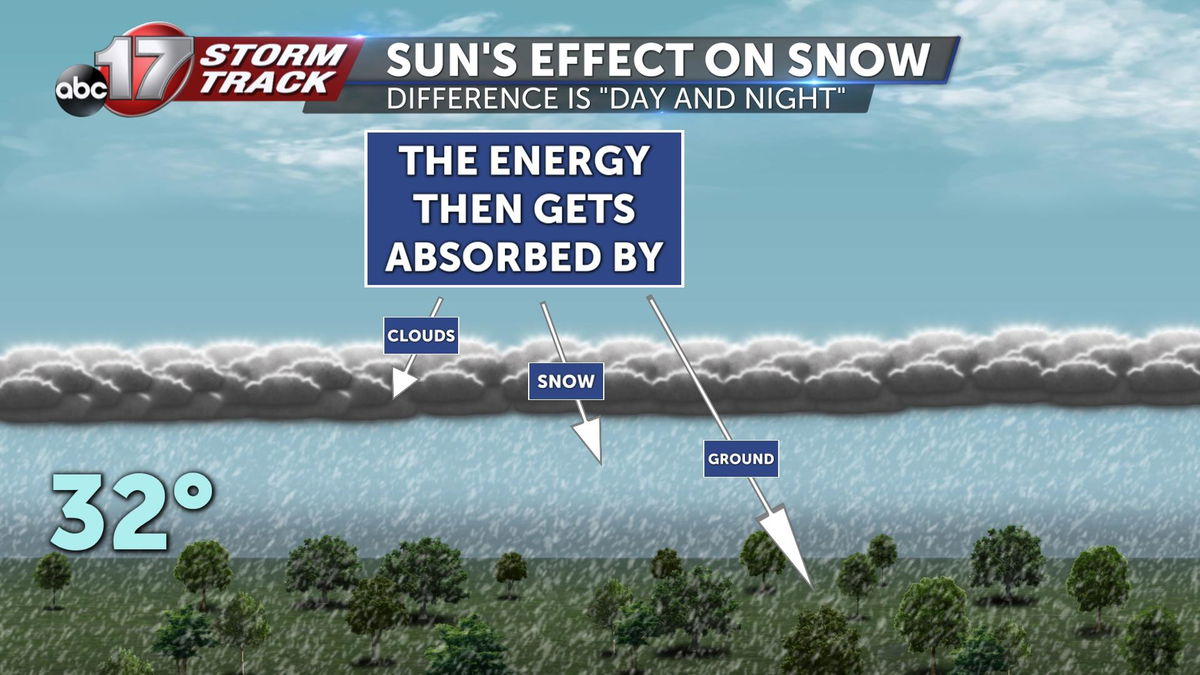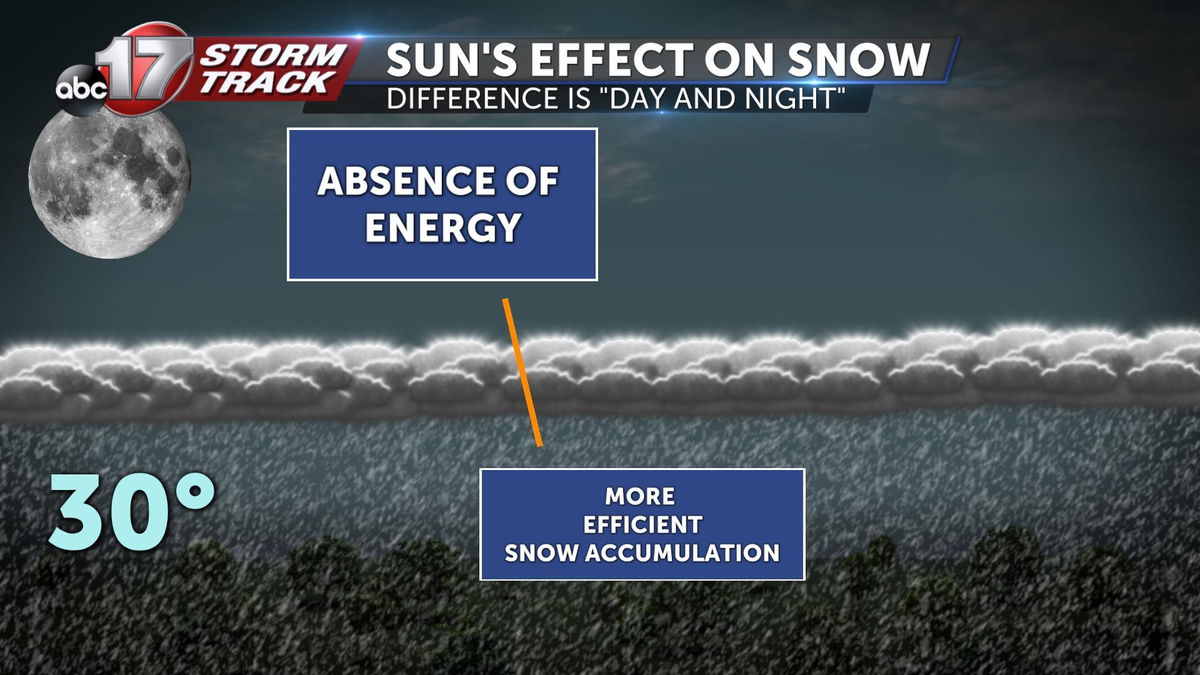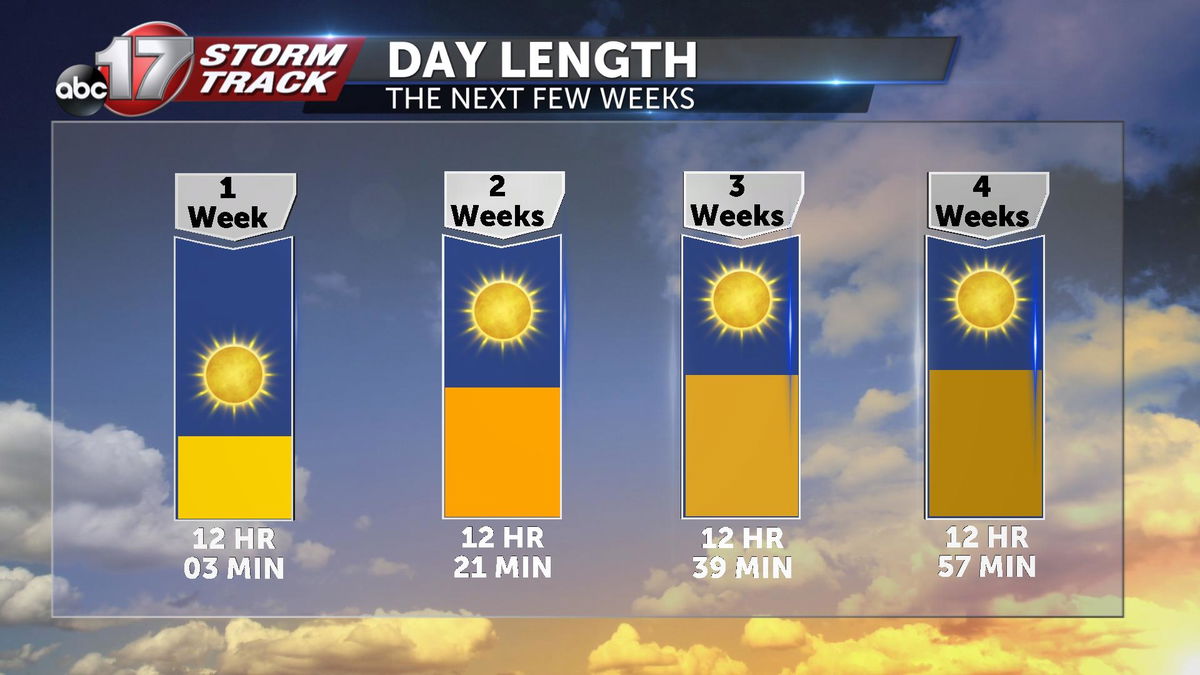Insider Blog: How sun angle impacts late season snow events
Thursday was the fourth in the last six weeks to bring measurable snowfall to mid-Missouri; an interesting fact, but maybe not as interesting as the role the sun played in our snow accumulation that day.

As we get closer to spring, the sun gets higher in the sky as the northern hemisphere tilts closer to the sun. This actually has a impact on snow accumulations during the day.

The sun emits energy that then gets absorbed by things like clouds, the snow itself, and even the ground as the snow falls on the ground. This limits accumulations and keeps things warm enough to melt that layer of snow, even if temperatures are below freezing.

As we head into the evening hours, the absence of the sun's energy results in overall cooling, but also the loss of that additional energy that can cause melting.

This allows for much more efficient snowfall accumulations. It's just one part of the equation that led to such quick accumulations during the overnight hours Thursday and into Friday morning.

As we get closer to spring, we're looking at not only higher sun angles, but longer days as well. We're gaining nearly an hour of sunlight over the next four weeks.
